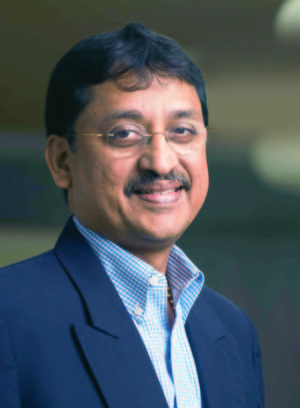Anthony Jacob, CEO, Apollo Munich Health Insurance, outlines the company’s strategy to design the right products, price them right, and most importantly provide right servicing:

Anthony Jacob believes in focusing on the easy,uncomplicated process for people seeking comprehensive health insurance
Mehul Dani: How do you evaluate the performance of Apollo Munich Health Insurance in 2015-16? How do you propose to up the volume in rural India?
Anthony Jacob: We have had a successful 2015-16. Our performance has given us the boost that will drive us for the future. The goals that we had set for ourselves in terms of customers, people, business model, value proposition and brand have all progressed well. We are confident of a positive, increasing year on year growth and we have been clocking around 20-25% growth every year for the past 9 years. Our product portfolio is quite comprehensive at the moment. However, we would look at launching special products catering to specific needs in the near future. We are well on our way of reaching out to people in the rural areas through various technological innovations that will cut down on application processes and turnaround times.
Have you launched any new products in 2015-16? What have been the responses? How do you propose to bring in product innovations in 2016-17?
Innovation has been in our DNA since our inception. We launched 2 products for special diseases in 2015-16. The response for both the products has been phenomenal. The Critical Advantage rider covers treatment for 8 illnesses abroad and also covers the travel and accommodation of one family member, in addition to the insured on a cashless basis. The policy allows for multiple trips abroad, in cases where the sum insured has not been used up in the first instance. Dengue Care policy is a value for money health insurance policy that is focused on dengue treatment and covers both hospitalization and outpatient treatment. As the incidence of dengue cases during the monsoon season is growing annually across the country, this policy is poised to help people avail best in class medical facilities to overcome dengue, and not worry about the medical expenses. Moreover, customers need not burn a hole in their existing health covers. Dengue Care is also an ideal product for those who seek a basic health insurance policy, but hesitate to purchase a full-fledged policy.
How is Apollo Munich different from other insurers in terms of pricing?
Our strategy is to design the right products, price them right and most importantly provide right servicing. We know healthcare and health insurance because of our parentage of Munich Health, the largest composite health insurer globally, and Apollo Hospitals, one of Asia’s largest healthcare providers, and this gives us the competitive edge. We believe in risk based pricing and by leveraging the knowhow of Munich Re, we have developed an age band basis pricing for multi variant options of the product for our customers to choose from. Also, our approach to health insurance lies in our positioning – ‘Let’s Uncomplicate’. It is our belief and our journey. We have positioned Apollo Munich as a straightforward, user-friendly and hassle-free health insurance company that will consistently tackle the general concerns faced by people when it comes to healthcare and health insurance. We focus on the easy uncomplicated process we have for people seeking comprehensive health insurance for themselves and their loved ones. This positioning has enabled us to create a unique brand identity for Apollo Munich raise our market share to 1.12% in the general insurance category.
What are the major problems that private sector insurance companies face on the distribution front?
Although the number of players in the health insurance segment has been steadily increasing, the increase in penetration is not gaining the same momentum. Merely, 12% of the Indian population is covered by some form of health insurance. We believe that a major hindrance to penetration has been the inability of insurance agents and brokers to reach across to all segments of population across the country. To increase awareness and then coverage across the country, a stronger distribution network is imperative in addition to the existing brokers and agents.
The need of the hour today is to increase penetration in tier 2 and 3 areas and have more people covered with health insurance to ensure they spend as little as possible from their own pockets for healthcare. Insurance companies are slowly but surely moving to tier 2 and 3 towns, but the results will take time.
The opening up of the bancassurance segment for banks to tie up with more than one health insurance provider has also aided in increasing awareness and number of lives covered over the past year. But of course, more work is required for a large increase. Banks and insurance companies must work hand in hand to clear perceptions and help people adopt health insurance.
A new avenue that could be considered would be tie-ups with NBFCs which cater to the rural segment. Health insurance could be bundled along with NBFC products to ensure people enjoy health insurance coverage. Another imperative is the need to develop customized products for various segments of the population, in keeping with the various ailments and diseases that are increasing in the country. Such products would help people counter long term effects and reduce burden of healthcare costs. We aim to build a cost efficient model of distribution which can help us to augment our reach into tier 2 and 3 cities apart from the major metros.
What changes have you introduced in your IT infrastructure in the last one year to drive productivity and efficiency?
Today, a customer looks for complete information at one place without any intermediary. Hence providing real time information about his policy and claims give more power to the customer. Taking a cue from the prime minister’s ‘Digital India’ initiative, we have launched a unique, disruptive and technology-driven distribution model and a self-service customer portal last year.
The idea was to offer a seamless and uncomplicated service to our customers. We created the portal to let the customers obtain answers to all their health insurance queries, without the insurer reach-out process. The portal allows customers to view, change/edit, renew their policies and their claims status. It also allows for downloading the 80D tax saving certificate, claim forms, and helps to track policy issuance status. It is also capable of handling high traffic, and simultaneously providing seamless experience to all the customers at the same time. More than 23,000 customers have visited the portal since its inception and more than 50% of customers registered with the portal have conducted transactions through it.
Approximately 2% of our policyholders bought health insurance policies online in the last financial year. We have been using social media tools to help educate and engage with people on a regular basis. Social media engagement is also a very important tool to gain better insights into how successful we are on social media and how people connect better with our brand. We use social media to uncomplicate health insurance products and claims processes.
How do you view raising the limit of FDI for the insurance sector?
This has ensured that there is an inflow of expertise from international insurance companies in terms of processes and big data analysis. An enhanced flow of foreign capital and international expertise will result in accelerating overall development of the insurance industry through increased access to international insurance products, distribution channels and world-class business practices. Overall, this has impacted the segment positively as there is an evident boost in the overall growth of the sector and more so for the fast growing health insurance sector through increased levels of awareness and capital for infrastructure development. This infusion will also greatly aid in marketing, distribution and research that will take insurance providers on a higher growth path and aid in greater penetration across the country.
How do you view the prime minister’s insurance schemes? Will these help in the growth of the segment?
The government-funded healthcare insurance plan for all citizens is a welcome step. I believe robust IT projects would be required to make this proposal a success because of diversity in India’s demography, climate, scattered BPL families and infrastructure. Also, a great deal of transparency and cooperation among all the stakeholders – government bodies, health care providers and insurers – is paramount.
Do you feel that the current policies and programs are conducive to improve the savings and investment environment in India?
The sentiment among corporates and industry is quite positive, given the economic growth of the country this past year. The government has been pushing several initiatives such as Make in India, Digital India and Skill India which have attracted large investments across various sectors. The Indian economy is certainly a bright spark in the Asia Pacific region and we look forward to another positive year. The growth of the financial sector, especially banks and NBFCs, has also been rising and this is evident in the large numbers of people using savings financial instruments such as savings bonds, mutual funds and insurance schemes to hedge against inflationary pressures. Banks have brought about robust technological advances in infrastructure and have been able to aid in insurance penetration increase through the bancassurance model.







